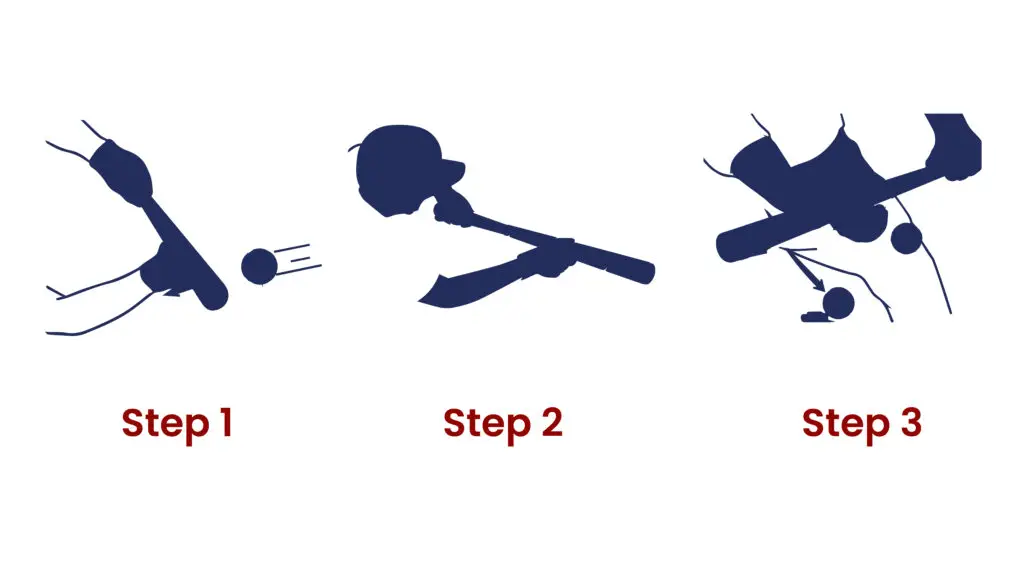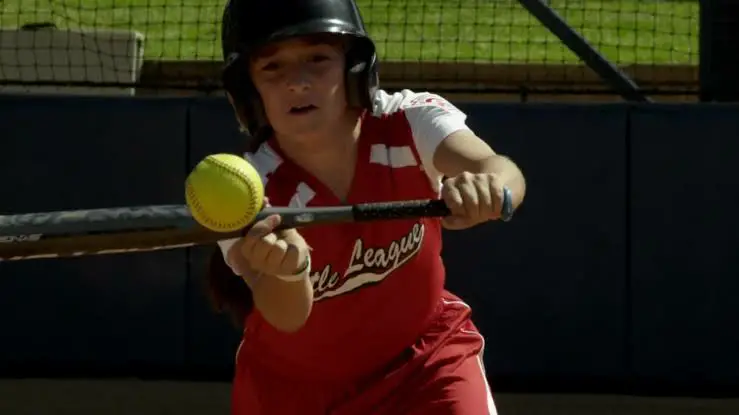In softball, the bunt plays a significant role; it is a huge piece of the team’s offense. The only thing more effective than a robust softball bunting approach is hitting the ball over the fence.

There is no substitute for practice, and a bunting drill provides just that.
In this brief, you will learn about the ideal form for a softball bunting drill and see a great drill you can use out of the different types of bunts.
There are three main sorts of bunts that are taught to young age players around the world.
The three types of bunts are the sacrifice bunt, the push bunt, and the suicide bunt.
Offensive players must understand the three types of bunts, and defensive players can also benefit from this knowledge.
Here are the three different types of bunts commonly used:
Sacrifice Bunt

The first of the three types of the bunt in softball. Most sacrifice bunts are used to advance a runner on base. Because the hitter is giving up their bat turn so the runner can advance, this strategy is known as a sacrifice bunt.
The hitter is expected to show the defense they are bunting by squaring up to the plate quickly and doing all their power to get.
When pitchers recognize that the batter is attempting a sacrifice bunt, they may add pitching motion, making it more difficult for the batter to execute the bunt successfully. Hitters’ hitting averages do not reflect sacrifice bunts.
Push Bunt

A sacrifice bunt’s close cousin is the push bunt. When there is a base runner, the batter will often square up to the pitcher early to lure in the defensive players.
This time, the hitter will aim to “push” the bunt through the oncoming fielders rather than “laid it down.” In most cases, batters try to get on base by bunting with the help of a push bunt.
Push bunts can also be risky when a pitcher throws a pitch high in the strike zone.
As a result, the bunter may struggle to get the bat’s sweet spot on top of the ball, leading to a line drive or even a pop-up. Try that risky bunt at your peril.
Suicide Bunt
A sly bunt like this is often used when a runner is on third base.
The batter will wait until the last possible second in the pitcher’s motion before he squares around to bunt.
When the third base coach calls for a suicide bunt, the hitter must make contact with the ball regardless of where it is thrown.
This is because the third-base runner will be trying to score as quickly as possible by making a break for home.
If the hitter does not make contact or lay down the bunt, the runner may be left high and dry, giving the defense a chance to make an easy out.
A wider stance is preferable while bunting because it will help you cover the outer pitch when you square up with the barrel at the top of the strike zone.
You can’t expect to catch an outside pitch in a small stance with your toes aligned, especially if you’ve turned into the bunt. Likewise, you must ensure you’re angling toward your sweet spot as you swing.
To effectively bunt an outside pitch, it is essential to position yourself so that the bat’s knob is pointing toward your stomach as the ball is being delivered.
Pretend your top hand catches the ball while you grip the bat in the bunt position.
You shouldn’t stretch your elbows or try to catch the ball; instead, you should wait for it to come to you. It’s important to remember to keep your elbows bent when you’re bunting, thats the key to being a good bunter.
Remember how important your role is as a link to the RBI.
The exercises for bunting in softball

A game-winning bunt at just the perfect time can change the course of a game. Training together will help everyone get better. When you bunt, you’re not just helping yourself; you’re helping everyone on your team. Listed below are some exercises to perform:
Pair Bunting
Split up into pairs for this team-building activity. One will take the mound and take the plate. Set up the field with the designated safe areas surrounding the player. When the pitcher throws a ball, the batter must wait for the pitcher to call first or third before deciding where to bunt.
The hitter must bunt only within the infield and outfield fair areas. The batter may take his turn at the mound when all pitches have been made. For this drill, you’ll need a bat and a golf ball.
The player can hone their aim by practicing this drill. It will show you where and when to bunt more effectively. Avoiding bunting to the pitcher will also become easier.
Bunting with Three
Collaboration between three individuals. Set up the teams such that they each have three players: two pitchers and a batter. All pitchers need a tiny ball to throw, and all batters need their bats. In this practice, the pitcher who pitches the ball is instantly replaced by the other.
The second pitcher quickly throws the ball after the first one is hit. Toss the ball about; when all the balls have been thrown, exchange roles and toss again.
With practice, the batter can speed up his bunt reactions. Moreover, you’ll get a good sense of where and how to bunt. A player will also learn that bunting back to the pitcher only helps the pitcher. In many situations, the ability to act quickly is crucial.
Alone Exercising
To perfect their bunt, a player might take their batting stance and use their game bat to practice. They can act as though they are bunting and the ball is coming to them.
Keeping your elbows bent rather than fully extended is an essential bunting technique that should be practiced while actually bunting. In addition, strive to be as authentic as possible throughout practice.
Make an effort to get outside the pitched ball during practice with the squad.
Softball bunting FAQs
Is it legal to bunt in softball?
Bunting is an important part of professional softball games. An acceptable bunt is a batted ball that is tapped or purposefully tapped into the infield rather than swung at. If the batter is attempting a bunt in USA Softball, they can leave the bat above the plate without risking a strike call if the ball is out of the strike zone as long as she doesn’t move the bat toward the ball.
You should face the pitcher and keep your bat angled such that the end is pointed up as soon as the pitcher starts his pitching action. As soon as the ball leaves your bat and lands in fair territory, it would help if you ran as fast as possible to first base in the hopes of beating the throw.
Why do softball players bunt so much?
The offensive effectiveness of a team depends on several factors, and bunts of all types contribute in different ways. Players, coaches, and fans must learn the various first base bunting strategies and when to employ them. Using a sacrifice bunt to advance a runner on a base is common practice.
